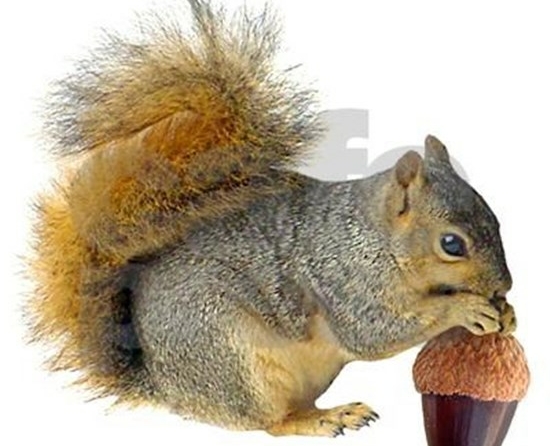SCORES & OUTDOORS: Squirrels in the compost pile
 Noisy, plentiful acorns; obscure beech nuts
Noisy, plentiful acorns; obscure beech nuts
 by Roland D. Hallee
by Roland D. Hallee
While preparing breakfast last Saturday, I glanced out the kitchen window towards my recently cleaned up garden plot. As I looked around I noticed some movement, and commented to my wife: “I think I have a title for a new country song, ‘There’s a squirrel in the compost pile.’”
I’m not sure how that translates to pickup trucks, bass boats and lost loves, but I’m sure it has a place in there somewhere.
Anyway, that prompted me to ask myself what could be in the compost that would interest a squirrel. After all, it has nothing more than plant stems, vines from squashes and various roots and stalks. There were a few tiny, fledgling fruits from these items that didn’t have a chance to mature, but that would be it.
Then my mind rewound to the recently closed down camp, and the food sources out there. Nearby there is a large oak tree and a mature, but fairly young beech tree. Most of you have probably heard acorns when they fall from the trees, and land on something substantive. They sound like gunfire, exploding bombs or branches falling. They make quite a loud noise. The presence of Beech nuts, on the other hand, are hardly even noticeable.
Wildlife that consume acorns as an important part of their diets includes birds, such as jays, pigeons, some ducks and several species of woodpeckers. Small mammals include mice, squirrels and several other rodents – ahh, squirrels. Large mammals include pigs, bears, and deer. Acorns are in high demand.
Acorns are attractive to animals because they are large and efficiently consumed or cached. They are rich in nutrients and contain large amounts of protein, carbohydrates and fats, as well as calcium, phosphorus and potassium, and the vitamin niacin.
Acorns are too heavy for wind dispersal, so the spreading of the seed is dependent on animals like the squirrels who cache the nuts for future use. Squirrels scatter-hoard the acorns in a variety of locations in which it is possible for them to germinate and thrive. On occasion, the odd acorn may be lost, or the squirrel may die before consuming all the acorns it has stored. A small number of acorns may germinate and survive, producing the next generation of oak trees.
As far as humans go, acorns have frequently been used as a coffee substitute. The Confederates in the American Civil War and the Germans during World War II, which were cut off from coffee supplies by Union and Allied blockades, respectively, are particularly notable past instances of this use of acorns.
As far as the beech nuts go, again going back to camp and the beech tree near our site, there doesn’t seem to be much activity by squirrels in the area of the tree. Of course, the beech nut seems to defy gravity. It is a small nut with soft-spined husks. Although it is high in tannin content, they are bitter. The nut can be extracted by peeling back the husk, but your fingers may hurt dealing with the spines. Maybe that is why they are not that attractive to squirrels.
Nowhere in all my research did I find any reference to wildlife that feast on the beech nut.
Beech trees are better known for other things than producing a source of food. The Beech bark is extremely thin and scars easily. Carvings, such as lovers’ initials, remain because the beech tree is unable to heal itself.
On a different note, slats of Beech wood are washed in a caustic soda to leach out any flavor and is used in the bottom of fermentation tanks for Budweiser beer. This allows a surface for the yeast to settle, so that it doesn’t pile up too deep. Beech is also used to smoke Westphalian ham, various sausages and some cheeses.
The American beech tree occurs only in the eastern United States and southeastern Canada. It is believed that it was found coast to coast prior to the Ice Age. Now they can only be found east of the Great Plains. You will rarely find the beech tree in developed areas unless it is a left over of a forest that was cut for land development.
The beech tree is also temperamental. Some trees never produce nuts while others only spawn edible nuts in certain years.
So what was that squirrel – I could not discern whether it was Martha or Stewart, my two resident rodents – looking for that day? Probably just window shopping.
Roland’s trivia question of the week:
With the World Series going past October in recent years, who was the first MLB player to hit a home run in November?
Responsible journalism is hard work!
It is also expensive!
If you enjoy reading The Town Line and the good news we bring you each week, would you consider a donation to help us continue the work we’re doing?
The Town Line is a 501(c)(3) nonprofit private foundation, and all donations are tax deductible under the Internal Revenue Service code.
To help, please visit our online donation page or mail a check payable to The Town Line, PO Box 89, South China, ME 04358. Your contribution is appreciated!


Leave a Reply
Want to join the discussion?Feel free to contribute!